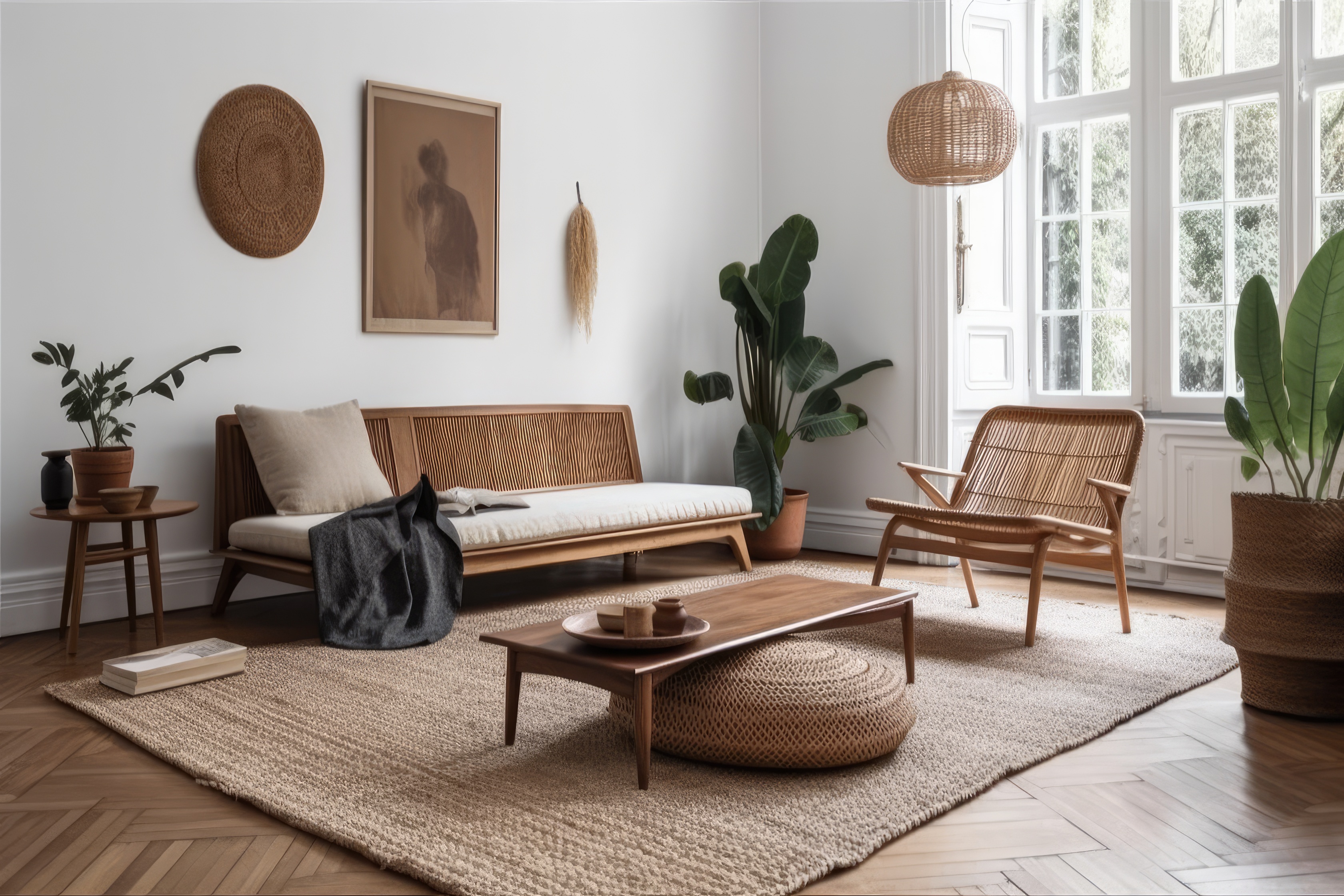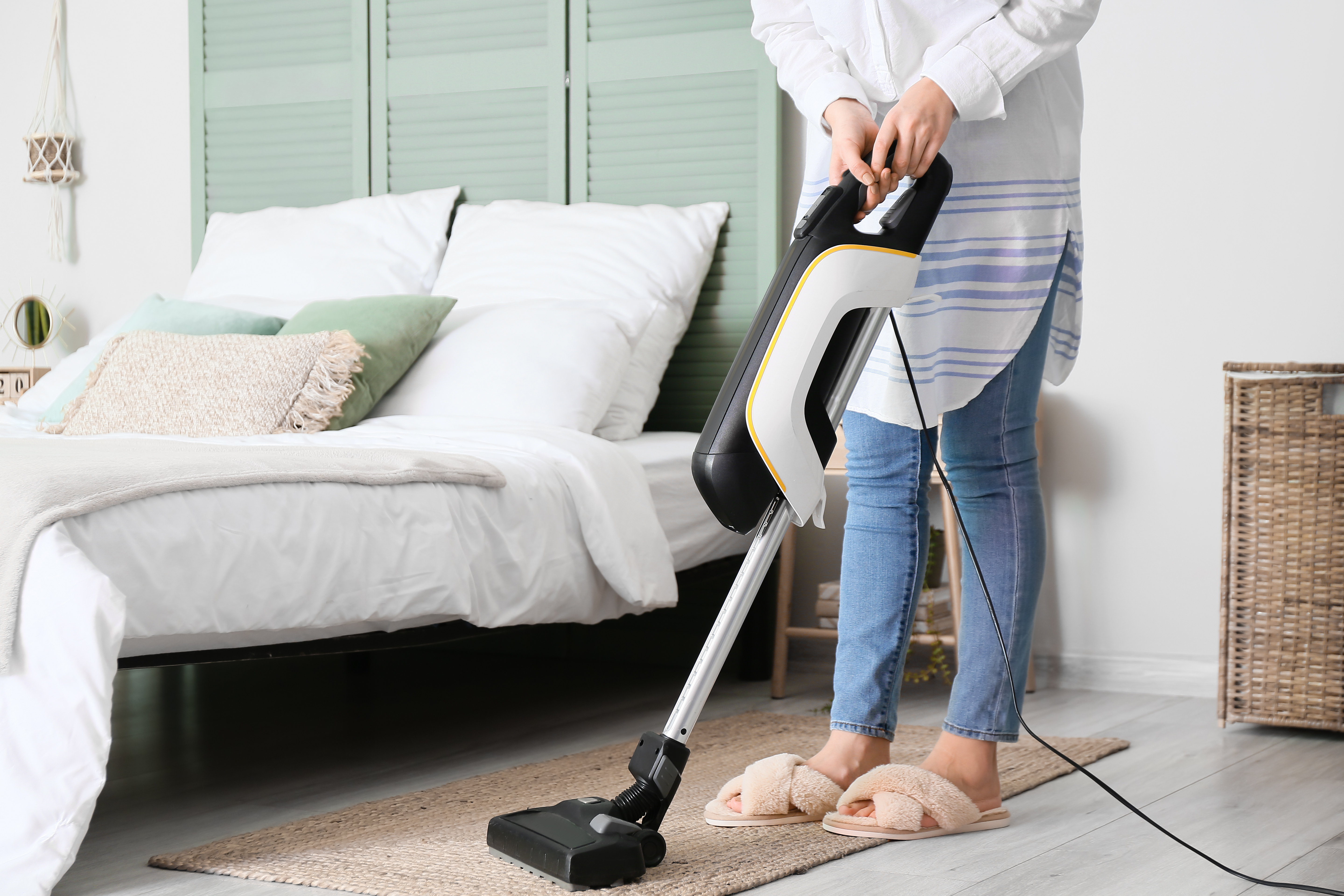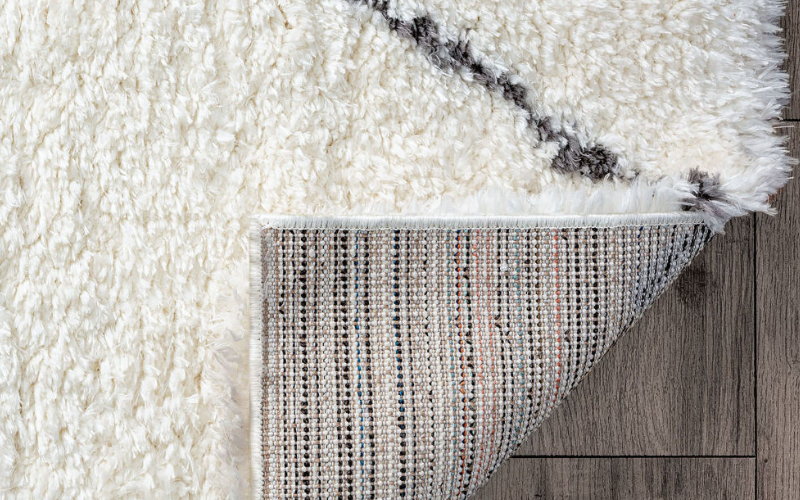5 Great Ideas for Flattening Your Rug
Apr 24th 2023
As all decor lovers know, a new rug can be an excellent addition to any room, adding some needed warmth, comfort, and style to your space. However, when you unroll a new rug or move an existing one, you can encounter unsightly creases, bumps, and curling edges. Fortunately, there are several effective methods to flatten a rug and achieve a smooth, flat surface. In this blog post, we will discuss five great ideas for flattening a rug. It does not matter if the rug is new or has been rolled up for a long time, the process is generally the same. So if you’ve ever struggled with getting your rug to lay down flat, keep reading to learn about some easy fixes!

Reverse Roll the Rug
To flatten a new rug or one that has been stored rolled up, reverse roll it. This is one of the simplest methods. This technique involves rolling the rug in the opposite direction. This helps to reduce the tension that caused the rug to curl or crease.
To reverse roll your rug:
- Unroll the rug and identify the areas where it is curling or creased.
- Starting at one end of the rug, roll it up tightly in the opposite direction of the curl or crease, ensuring the rug's edges are aligned.
- Keep the rug rolled for several hours or overnight to allow the fibers to adjust and relax.
- Unroll the rug and check if the creases or curls have diminished. Repeat the process if necessary.
This method is effective for flattening a new, rolled, or long-stored rug.

Apply Weight to the Rug
Another effective method for flattening a new rug, rolled rug, or a rug with creases is to apply weight to the affected areas. This technique helps to force the rug fibers to relax and lay flat over time.
To apply weight to your rug:
- Lay the rug flat on the floor, ensuring it is fully stretched out.
- Identify the areas where the rug is curling or creased.
- Place heavy objects, such as books, furniture, or other weighted items, on the affected areas. Be sure to distribute the weight evenly to avoid causing further damage to the rug.
- Leave the weights in place for at least 24 hours, then check if the rug has flattened. If necessary, repeat the process or leave the weights in place for a more extended period.
This method is suitable for anyone who is unsure of how to flatten out a new rug, how to get a rug to flatten out, or how to flatten a rug with creases.

Use a Rug Pad
A rug pad is a useful tool for flattening a rug. It provides a stable and supportive foundation, which can help to prevent curling and creasing. Rug pads are available in various materials, including felt, rubber, or memory foam, and can be cut to fit your rug perfectly.
To use a rug pad to flatten your rug:
- Purchase a rug pad that is appropriate for your rug's size and material.
- Trim the rug pad if necessary to ensure it fits just inside the rug's edges.
- Lay the rug pad flat on the floor, then place the rug on top, aligning the edges.
- Smooth out any wrinkles or creases in the rug, applying pressure as needed to help the rug lay flat against the rug pad.
- Leave the rug and rug pad in place for several days, allowing the rug fibers to adjust and relax over time.
This method is effective for how to flatten a new area rug or how to flatten out a rug that has been stored or moved. And the great thing about rug pads is that they can be left in place permanently to prevent any sliding or shifting, so this is less of a temporary fix than the other options we’ve discussed so far.

Use Heat and Moisture
Heat and moisture can be useful for how to flatten a rug, as they help to relax the rug fibers and make them more pliable. This method is effective for flattening a rug that has been rolled up for a long time. It is also useful for a rug with creases that have become difficult to remove.
To use heat and moisture to flatten your rug:
- Lay the rug flat on the floor, ensuring it is fully stretched out.
- Identify the areas where the rug is curling or creased.
- Lightly mist the affected areas with water, using a spray bottle. Be careful not to oversaturate the rug, as excessive moisture can cause damage. The only rugs that will need a large amount of water are those that are already water-resistant like outdoor or machine-washable rugs.
- Use a hairdryer on a low heat setting to gently warm the dampened areas of the rug. Keep the hair dryer moving to avoid overheating any specific spot.
- While the rug fibers are warm and damp, use your hands to smooth out the creases and press the rug flat against the floor.
- Allow the rug to air dry completely before walking on it or placing furniture on top.
This method works well for how to flatten a new rolled rug or how to flatten a rug with stubborn creases.

Seek Professional Assistance
It may be time to seek professional assistance if you have tried the methods suggested above and still can’t manage to flatten your rug. And this might happen! The longer that a rug has lived with creases or the longer it has been stored, the harder it is to re-flatten it and get it back to its pristine condition. A professional rug cleaner or repair specialist can address persistent creases or curls. They may even offer additional services, such as blocking or stretching the rug, for a perfectly flat surface, as well as in-home cleanings!
To find a professional rug specialist:
- Research local rug cleaning and repair services, reading reviews and checking their credentials.
- Contact the rug specialist to discuss your rug's specific needs and obtain a quote for their services.
- Schedule an appointment to have your rug professionally treated, following the specialist's recommendations for any necessary aftercare.

Frequently Asked Questions
Q: How long does it take for a rug to flatten after being rolled up?
A: The time required for a rug to flatten can differ. Factors such as the material, how long it was rolled, and the flattening method used are all relevant. A rug should typically flatten after unrolling it. This should occur within a few hours to a few days. If your rug is being stubborn, use one of the methods we’ve described above, and the process can take longer but it will be well worth it when your rug is returned to its former glory!
Q: Can I use an iron to flatten my rug?
A: It is not advised to use an iron to flatten a rug. The high heat can damage the rug fibers or cause discoloration, especially with thicker rugs like shags. Use a hairdryer on a low heat setting, paired with some light moisture to make the fibers more pliable. Refer to Method 4 for details on exactly how to do this!
Q: Will walking on a new rug help it flatten?
A: Walking on a new rug may help flatten it. However, it may not be enough in areas with creases or curled edges. To achieve a smooth, flat surface, try using one or more of the flattening methods described in this blog post.
A flat, smooth rug is not only more visually appealing but also safer and more comfortable to walk on. Try reverse rolling, applying weight, using a rug pad, applying heat and moisture, or seeking professional assistance to flatten your rug. This will ensure you can enjoy its beauty and functionality in your space. Remember to be patient, as some rugs may take longer to flatten than others, depending on the material and degree of curling or creasing.



